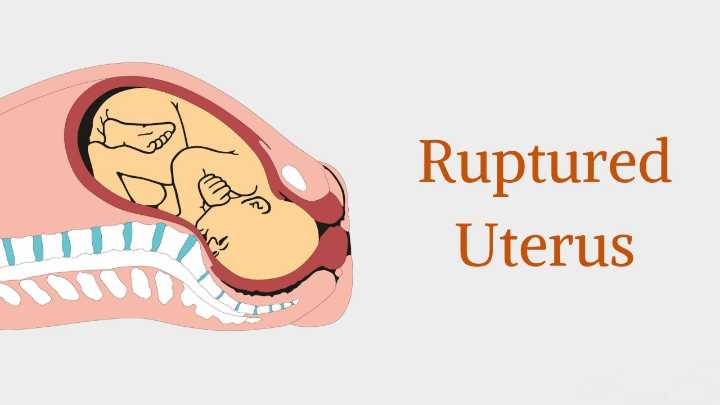Uterine Rupture: What Are Its Symptoms and How Is It Treated?

The structure of the Uterus is made up of 3 layers. The inner most layer (endometrium), the middle muscle layer (myometrium) and the outer most serosal layer.
The term Uterine rupture is used when there is a tearing of the uterine wall resulting in complete division of all 3 layers of the uterus. This is a rare and disastrous condition with high chances of loss of life.
There are a few reasons why a rupture of the uterus might happen. The commonest being during child birth and delivery process of a previously scarred uterus. Uterine scars are seen in those who have undergone a previous caesarean section for the birth of a baby or surgery for removal of a fibroid called myomectomy. The scar on the uterus is a weak point and it can tear during the forceful contractions seen during the process of childbirth, which could lead to the rupture of the uterus.
Rupture can also rarely occur in a non-scarred uterus if the labour contractions are very strong, prolonged or if there is excessive stretching and thinning of the uterine muscle as in multiple pregnancy or excessive fluid around the baby.
Other causes can be congenital abnormalities of the uterus where there is inherent weakness of the uterine muscles which can tear and rupture when the pressure inside the uterus increases during advanced stages of pregnancy or if the baby if very big or fluid around the baby is excessive during pregnancy.
Rupture can also occur when the baby is manually rotated inside the womb a procedure called external cephalic or internal podalic version. The other rare cause is trauma to the uterus, especially during pregnancy, even a blunt trauma to the abdomen can cause uterine rupture.
The symptoms the patient suffers from in this scenario is severe acute abdominal pain not responding to any pain killers and or vaginal bleeding. The Patient can collapse due to internal or external bleeding and this is life threatening.
During labour the signs that can alert the obstetrician of the possibility of an impending rupture are vaginal bleeding, severe constant abdominal pain in contrary to intermittent nature of labour pains, sudden rise in pulse or fall in BP of the mother and the fetal head that is descending down is suddenly pulled upwards into the abdomen. There may also be sudden fall or abnormal change in fetal heart rate pattern.
Management involves immediate and prompt caesarean section delivery of the baby and suturing of the site of tear, sometimes the tear is so bad that removal of the uterus (hysterectomy) may be the only option to save the life of the mother. In non-pregnant ruptures, opening of the abdominal cavity by procedure of laparotomy is performed to identify the site of rupture and repair it.
Being a very vascular tissue, the loss of blood from the torn uterus can be excessive and blood transfusion is usually inevitable with associated complications of hypotension (fall in BP) and blood transfusion.






